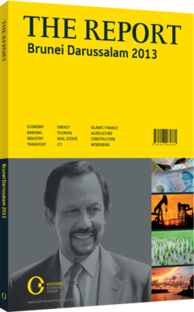OBG talks to Marcelino Ugarte, General Manager, Heidelberg Cement Asia

Interview: Marcelino Ugarte
What effect do you expect new public housing developments and large infrastructure projects to have on the short-term demand for cement?
MARCELINO UGARTE: In the past, cement demand in Brunei Darussalam reached a peak during the construction boom in 1996, when annual consumption was around 700,000 tonnes per year. Today, annual demand stands at about 430,000 tonnes. Nonetheless, we are prepared to support the type of increased demand that was apparent in the mid-1990s. Prospects look good for a rise in demand, as there are many new projects in the pipeline. As there appears to be a sense of urgency surrounding new constructions such as roads and bridges, we have seen some progress made.
On the other hand, we’re currently working on the implementation phase of the housing developments, which are ongoing and have been a strong driver for the construction materials industry.
At the moment we’re still finishing the housing, but are also looking forward to supplying the larger infrastructure projects. I believe some of the challenges in implementing the larger projects include ensuring that there is a minimal impact on the environment and that the engineering and manpower specifications are done properly. Significant resources are currently now being dedicated to the housing developments. Therefore, we expect that, as these resources become increasingly available, this will prompt movement on other large infrastructure projects.
How will the limited stock of developable land affect the long-term sustainable growth of the construction and building materials industry?
UGARTE: There is still a sizeable amount of land left to build on; however, there is also room to improve building design to increase the sustainability of the construction sector. Although vertical building traditionally hasn’t been very popular in Brunei Darussalam, it is something that can invigorate the sector and extend its lifespan.
The country still has a relatively large stock of suitable building land compared to other places, but it’s good to plan ahead, preserving some land and starting to build vertically In what capacity does the government protect local construction materials manufacturers?
UGARTE: We do have a lot of support from the government and we take pride in being a local producer.
There are advantages to doing business here. It’s clean and safe, power is relatively cheap and there is goodquality infrastructure. We are arguably the largest private sector in Brunei Darussalam outside of the oil and gas sector, and we want to be a positive example to attract other industrial manufactures.
The government supports us as much as it can, but we are always looking for more support as the market is growing. It is difficult to compete with cheap imports from other countries, such as China. All local companies face this challenge around the world.
In the short term, people want the cheapest priced goods available, but we’ve seen that this can have negative long-term consequences. When all the business comes from outside the country, there is no trickledown effect to support the local economy.
Importantly, we as a local manufacturer place high emphasis in the growth of our local talents. They are given continuous on-the-job training to enhance their knowledge and skills. These continuous internal and external trainings will improve their skill sets to meet the changing demands of new technologies. We believe these development programs are necessary to allow our local talents to contribute fully to the company and nation’s productivity in the long run.
Conversely the presence of local manufacturers will also provide both direct and indirect employment opportunities to the local dealers, retailers, suppliers, contractors, logistics companies and others. The presence of sustainable local manufacturers is definitely a boon as it helps to support the various spin off economy activities that are related to those industries.
You have reached the limit of premium articles you can view for free.
Choose from the options below to purchase print or digital editions of our Reports. You can also purchase a website subscription giving you unlimited access to all of our Reports online for 12 months.
If you have already purchased this Report or have a website subscription, please login to continue.

